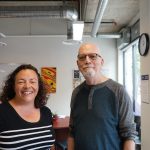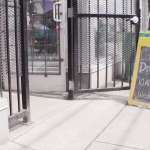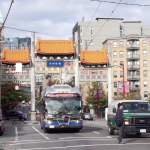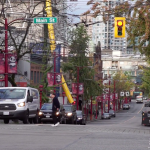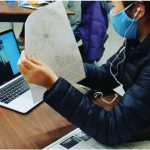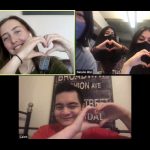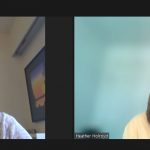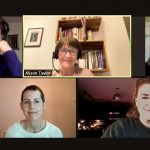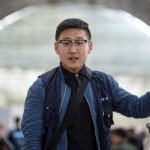By Sara Sanabria
It’s common to think about whether a non-profit has the capacity to host students in numerical terms: how many staff there are, how large the space is, or how many clients are served in a day. After chatting with Austin and Brandon, it became clear that organizational capacity depends primarily on trust, commitment to mentorship, and space for innovation.
Both Austin and Brandon admitted to feeling apprehensive at the beginning of Brandon’s practicum. For Austin, the relationships developed in the community with individuals and other organizations were fragile. Brandon knew it would be a steep learning curve to learn about the community and its members. Fortunately, just as Eastside Works makes a commitment to “meeting clients where they’re at” and appreciating their diverse pathways, they do the same with student interns. When Austin interviewed students, he was more concerned about their attitudes than their technical skills—and he welcomed critical questions about the organization’s work.
Austin recognizes that innovation often results from asking hard questions. Having a degree in philosophy has given Brandon the tools to ask such questions; he doesn’t shy away from the tensions. He shared that his initial excitement about the practicum was because Eastside Works “was still learning about itself and adapting.” There was space to contribute to visioning about what they were trying to achieve and what contribution the organization could make to strengthening the DTES community.
Apparently, Brandon asked a lot of questions at the beginning. And that prompted Austin and his colleagues to also reflect on things anew. Students who are open-minded and curious are well positioned for “boundary-crossing” opportunities because they often have more time to reflect and to exercise initiative. As newcomers, they’re often able to see taken for granted practices from a new angle.[1]
Constantly reflecting on its raison d’être ensures Eastside Works uses its scarce resources most effectively. For example, a key role it has taken on is to communicate with other service providers in order to improve life for community members in the DTES. Austin and Brandon believe solutions to poverty must be holistic, and see themselves working within the ecosystem of community and governmental agencies toward that end.
A key insight for Brandon has been that there are multiple ways of achieving the same goal. Our conversation with Austin and him suggests that making space for community members to lead, and making space for students to grow, depends less on numerical capacity and more on expansive thinking.
[1]See article: Tuomi-Gröhn, T., & Engeström, Y. (2003). Conceptualizing transfer: From standard notions to developmental perspectives. Between school and work: New perspectives on transfer and boundary-crossing, 19-38.
